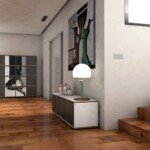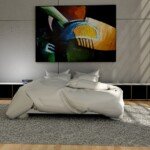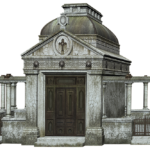Your Creative Catalyst: Unlock the World of CNC DIY Projects (plus when to go professional)
The humming sound of the spindle, the crisp smell of processed coolant, the fascinating dance of precisely engraved materials – CNC (Computer Numerical Control) technology has revolutionized the manufacturing industry. But it’s not just for giant factories. Affordable desktops and accessible software open the floodgates for manufacturers, hobbyists and entrepreneurs to explore the incredible potential of CNC for individual projects. Whether you’re an experienced tinkerer or just CNC is fun, this world offers endless possibilities to turn your ideas into tangible realization.
Apart from mere tools, desktop CNC routers and mills are also powerful portals for creative, problem-solving, and even small-scale entrepreneurs. Let’s dig into some exciting DIY ideas and practical considerations while also acknowledging the limitations of DIY endpoints and the power of like the professional CNC service Greglight’s five-axis machining Truly shine.
Level 1: Introductory Inspiration (Router Exploration)
-
Personalized signage and decoration: This is where most enthusiasts start, and there is good reason! CNC routers excel in cutting intricate shapes and lettering. create:
- House Sign: Beautiful custom address for patches of wood, plastic or MDF.
- Art Wall: Geometric pattern, inspiring quote or last name elegant or cut last name.
- Festive decoration: Unique ornaments, decorative panels, festive logos.
- Roller Coasters and Trivets: Personalize through family monograms, logos or intricate designs. Playing with different woods and inlays adds elegance.
- Picture frame: Design unique profiles that match your decor exactly.
-
Functional household supplies: Beyond decoration to become utility:
- Custom Organizer: Table tray, drawer partition, tool rack, puzzle tray – precisely cut to fit perfectly.
- Cutting board and service platter: Create amazing end grain designs or engrave decorative patterns in hardwood. Food safety finishes are crucial here.
- Jewelry stands and boxes: Use wood or acrylic to create beautiful personalized displays. The internal compartment can be used precisely for a specific project.
- clock: Design a unique clock face or body. Integrate different materials (wood and metal inlays) into visual interest.
- Prototype and model manufacturing: Hobbyists and designers can quickly iterate over physics concepts.
- Scale model: Architect, model railway or game designer (using wood, foam or plastic) buildings, vehicles or landscapes.
- Product Model: Quickly visualize new ideas and test forms/features before investing in more expensive tools.
- Mechanical parts: Simple gears, brackets, casings for custom electronics or robotic projects (using plastic or softer metals (such as routers made of aluminum).
Level 2: Strengthening Challenges (Milling and More Complex Routing)
As skills and machine capabilities grow, projects become increasingly demanding:
-
Precious Metals Work: High-precision desktops are often paired with specialized fixtures to machining softer metals such as brass, copper and aluminum:
- Custom jewelry: Rings, pendants, bracelets, personalized prints with complex patterns or beyond manual limitations.
- Retro Tech Repair: Copy the knobs, panels, or other components of a classic radio or device.
-
Tools and Upgrades: Making better tools with your CNC:
- Custom fixtures and fixtures: Create a professional holder or alignment tool that is perfect for your workshop needs.
- Machine parts: Replace worn parts, create custom brackets for your bench, or enhance other tools with custom components.
- Router template: Design complex contours once and reuse the CNC cutting template with a manual router.
- Advanced Instruments and Components: For technical tendencies:
- Case panel: Accurate front/rear panel for DIY electronics projects (synthesizers, amplifiers, test gear) with professional openings for switches, jacks and displays. Material: Aluminum is the king here.
- Mechanical components: Simple gearbox, link or custom camera/lens collar, requiring multiple machining parts.
Level 3: Breakthroughs (DIY often reaches its limit)
Here, ambitions can surpass the capabilities of high-end DIY machines. Achieving true precision, complex geometry, harsh materials or ready finishes often require more.
-
Precision functional components:
- Drone/UAV Frame and Parts: Lightweight, high-strength components require tight tolerances, complex profiles and aviation-grade materials such as specific aluminum alloys or carbon fiber composites. (Requires higher stiffness, high RPM spindles and usually multi-axis functions).
- Engine/mechanical modification: Custom intake manifolds, throttle mechanisms or lightweight mounts require volume/material integrity and tight hole tolerances.
- Optical mounting and laser cutter assembly: A fixture with sub-millimeter precision is required, with fine finishes to minimize scattering and specialized metal materials.
- High-end audio components: Tone parts, dedicated radiator, chassis components, require precise tolerances, vibration damping characteristics, and excellent surface finishes.
- Custom camera lens adapter: Precise mounts to adapt modern lenses to old-fashioned cameras require exact flange distance and perfect alignment (and often also require lathe work).
- Art Encounter Engineering:
- Complex sculpture forms: Deep 3D Embossed Engraving is impossible to use 2D/2.5D tool paths. Thinking: Bust, topographic map of deep valleys, biological shapes.
- Metal Artwork: Highly detailed sculpture or decorative panels, such as stainless steel or titanium, require powerful machines and potential multi-axis machining.
- Custom watch components: The baffle, crown, case back, and even complex dialing structures require micro-precision, various metals and high quality finishes. This requires five-axis machining.
- Intricate knobs and handles: Used for furniture or instruments, designed in undercut or organic form, requires simultaneous multi-axis movement.
Great Advantages: When your vision requires industrial muscles
So you dream of an incredible component – a lightweight titanium drone frame, a complex aluminum radiator cover with composite curves, a stainless steel camera stand with precision angles or a well-curated bronze sculpture. Your desktop CNC is a great tool, but it may not be the right one For this specific job. What now? Here, like Greatlight, professional five-axis CNC machining becomes essential.
This is why relying on professionals makes sense for advanced projects:
-
True 5-axis force:
- Complex geometric shapes: The intricate shape of the machine has an undercut, a deep cavity and a composite angle In a setting. This is impossible for a 3-axis machine and requires complex repositioning (adding error) on the 4-axis.
- Top surface finish: Optimized tool orientation minimizes pedal markings and enables continuous cutting paths on the contour surface, greatly reducing post-processing time.
- Access with precision: Easily reach difficult angles and maintain high accuracy on complex parts without continuous re-fixing.
-
Industrial hardware and tools:
- Material Capacity: Greatlight machines handle the entire spectrum: soft plastics (3D polymers), hardwood/composites and crucial All engineering metals – Effectively deal with tough steels such as hard steel, steel, titanium and exotic alloys, in the case of DIY machines struggling or failing. We also address CFRP machining challenges such as layering and tool wear.
- Stability and strength: Heavy duty iron structure, high torque spindles and powerful linear systems handle high material removal rates and maintain accuracy under heavy cutting loads.
- Advanced Tools: Visit numerous specialized end mills, drills and inserts designed specifically for specific materials and operations to ensure optimal results and surface quality.
-
Engineering expertise and quality control:
- Manufacturing Design (DFM): Experienced engineers will proactively review your design and propose optimizations for cost, manufacturing and performance. They will find potential tolerance build-up errors, fixed issues, or impractical features that DIYERS often missed.
- Process optimization: Choose the right speed/feed, tool path and labor strategy to minimize processing time and cost while maximizing quality and tolerances.
- Strict inspection: Use precision metering equipment (CMM, micron, optical comparator) to ensure that all dimensions, tolerances (including GD&T) and surface finishes consistently meet your specifications. You will get certified documentation to prove this.
- Strict process control: Repeatable processes can be recorded through a working router.
-
Total solution – One-stop post-processing:
- Seamlessly done: In addition to cutting metal, Greglight also provides essential post-processing:
- Deburring: Safe and efficiently remove sharp edges.
- Surface finish: From orthogonal to precision grinding, polishing (vibration, manual, polishing), bead blasting (various media/textures), tumbling, improved wire EDM for exotic metal surfaces. We ensure surface consistency.
- Heat and paint: Heat treatment (annealing, hardening, pressure relief), electroplating/electropolishing, anodizing (type II, type III/hard coating), painting, powder coating – all handled internally to ensure quality and compatibility.
- Final assembly/kit: Save you time and logistics headaches on multi-part projects – we provide finished components.
- Seamlessly done: In addition to cutting metal, Greglight also provides essential post-processing:
- Scalability and reliability:
- Production prototype: Transition seamlessly from the initial 1-5-piece parts to larger production runs without the need for archive procurement headaches. Greglight’s advanced equipment allows consistent multi-day production.
- speed: Advanced machines and optimized craftsmanship mean faster turnaround speeds than DIY or smaller stores.
- Reliability and consistency: Industrial machines are reliable 24/7 when needed. You will get the same quality in Part 1 and Part 100.
Conclusion: Embrace each stage
The DIY CNC scene is full of vitality and offers unparalleled satisfaction. Build custom logos, perfectly organized drawers or unique artwork that can deeply connect you with the creative process. Simply start, learn the basics of tool paths, feed/speed, labor and CAD/CAM software. This is a beneficial project!
But recognizing ambition requires the right tools. When your design requires complexity, high precision, exotic materials, professional finishes or near-production quality for advanced aerospace applications or critical medical equipment, Great Not only is it an option – it is the path to achieve your vision reliably, efficiently and with the highest standards.
Don’t let device restrictions stifle your thoughts. Explore DIY potential, push its boundaries, and use our expertise to bring your most challenging and meaningful projects to life as you reach them. From concept to manufacturing execution, your creativity should be the perfect partner at every stage.
Customize precision parts now with Greatlight five-axis CNC machining – fast turnaround, best price, guaranteed quality! [Link to your custom quote/contact page]
FAQ: CNC DIY and Professional Services
Q1: I am a novice. What is the best CNC machine for beginners?
A: Start with a powerful desktop CNC router (Like those from Shapeoko, X-Carve, or Onefinity). Focus on ease of use, community support and large learning-friendly work areas. Learn with soft woods and plastics before dealing with hardwood or aluminum. Avoid very cheap Chinese clones that lack support. Milling machines are more rigid in metals, but involve a steeper learning curve.
Q2: What is the biggest difference between a CNC router and a CNC factory?
Answer: Mainly Rigidity and spindle power.
- router: Larger work envelope. Suitable for softer materials such as wood, plastic, MDF, sometimes (struggle) aluminum. Usually higher spindle speeds and less torque. Usually open frameworks.
- Mill (including machining center): Stronger cast iron structure. Designed for precise metal cutting (aluminum, steel, titanium). Higher torque spindles, usually with slower maximum rpms. Usually closed. Features automatic changer (ATC) and coolant system. Professional manufacturing only depends on CNC mills. The DIY ground machine is a little blurry.
Question 3: I need to fix aluminum on my homemade/desktop CNC router/mill. Are there any skills?
A: It is absolutely possible to do a lighter job!
- Maximize rigidity: Ensure that the machine frame, spindle mount and workpiece are clamped very securely. Minimize tool stickiness.
- Using sharp tools: Carbide end mill designed for aluminum (usually 2 or 3 flutes with high helical angles). Lubricated/cool!
- Conservative environment: Use shallow depth of cut (DOC) and medium width (WOC). Higher spindle speeds are usually suitable for aluminum.
- Climbing and milling: Aluminum is usually preferred for better finish and tool life.
- Management chip: The chips are the enemy! Pre-drill holes and continuously evacuate using air explosion or mist coolant.
Question 4: When should I consider a professional CNC service like Greatlight instead of DIY?
A: Considering the grandeur involved in your project:
- Complex 3D geometry and undercut: Real 5-axis machining is required.
- Engineering Metals: Stainless steel, titanium, hardened steel or complex alloys.
- Very tight tolerances: (+/- 0.001" or consistent). The fixing requirement for precise metal work requires precise positioning and clamping without distortion.
- High production volume: It requires consistent quality for dozens of parts, especially the critical part of failure zero tolerance.
- Professional finish: Accurate grinding, polishing, anodizing, plating or heat treatment is required.
- Parts that require certified quality: Material procurement, traceability and inspection reports that need to be recorded (e.g., medical, aerospace, industrial machinery).
Question 5: How does five-axis CNC machining benefit me from simpler parts?
Answer: 5 axis is in:
- Reduce the setting time: A complex part machining in a setup that eliminates alignment errors.
- Improved tool access and angle: For deep bags, angled holes, engraving surfaces are particularly important.
- Quality surface on the profile: Continuous cutting path capability improves quality.
- Longer tool lifespan: Optimal tool orientation reduces local wear.
- Features of exquisite processing: Ability to optimally orient parts/tools to achieve thin-walled or fragile geometry.
- efficiency: Complex views generated in CAD are faithfully copied without multiple operations.
Q6: What documents do I need to provide professional CNC quotations?
A: Ideally, provide 3D CAD Model (Step, IGES, SLDPRT, X_T, X_B files are preferred). Cleaning the 2D DXF/DWG drawings is useful, but not enough to reference the 5 axes. Includes critical dimensions, tolerances, material specifications, surface treatment requirements and required quantities. Pictures or sketches help explain the intention of geometric display. Greglight can assist with translation/drawing services when needed.
Unlock the full potential of your project. Greatlight combines advanced five-axis functionality, expert engineering and comprehensive completion of unparalleled precision and quality. Get a quote and experience the difference today!

















